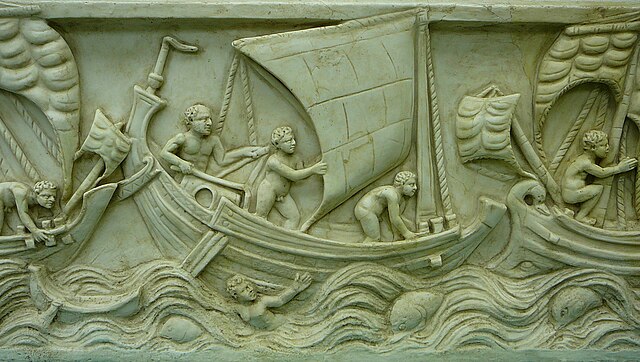Dazzle camouflage, also known as razzle dazzle or dazzle painting, is a family of ship camouflage that was used extensively in World War I, and to a lesser extent in World War II and afterwards. Credited to the British marine artist Norman Wilkinson, though with a rejected prior claim by the zoologist John Graham Kerr, it consisted of complex patterns of geometric shapes in contrasting colours interrupting and intersecting each other.
USS West Mahomet in dazzle camouflage, 1918
Eyepiece image of a warship in a naval rangefinder, image halves not yet adjusted for range. The target's masts are especially useful for rangefinding, so Kerr proposed disrupting these with white bands.
Claimed effectiveness: Artist's conception of a U-boat commander's periscope view of a merchant ship in dazzle camouflage (left) and the same ship uncamouflaged (right), Encyclopædia Britannica, 1922. The conspicuous markings obscure the ship's heading.
A naval coincidence rangefinder, c. 1930
Ship camouflage is a form of military deception in which a ship is painted in one or more colors in order to obscure or confuse an enemy's visual observation. Several types of marine camouflage have been used or prototyped: blending or crypsis, in which a paint scheme attempts to hide a ship from view; deception, in which a ship is made to look smaller or, as with the Q-ships, to mimic merchantmen; and dazzle, a chaotic paint scheme which tries to confuse any estimate of distance, direction, or heading. Counterillumination, to hide a darkened ship against the slightly brighter night sky, was trialled by the Royal Canadian Navy in diffused lighting camouflage.
USS West Mahomet in First World War dazzle camouflage
Roman ships, depicted on a 3rd Century AD sarcophagus
USS Olympia
USS Shawmut was the former Eastern steamship Massachusetts converted to lay the 1918 North Sea Mine Barrage.







